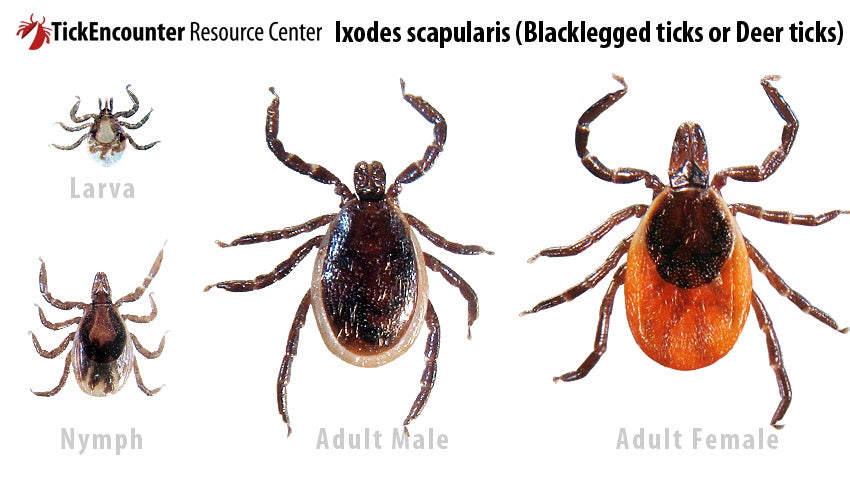Everyone Can (and should) Do A Quick Daily Tick Check
Even after that first, second, or even third frost or killing freeze… this time of year, ticks are still here! They’re not killed off, and there’s something different about the fall tick season. In Autumn, the ticks people encounter are pretty much ALL one type of tick — adult stage blacklegged (deer) ticks.
The tiny poppy seed-sized nymph ticks that got a blood meal in late spring and summer have now grown into either the adult male or female form, and the black and red-colored adult females are extremely active NOW, looking to steal a blood meal, mainly from deer, but people and pets are also attacked. The all-black male deer ticks are active, too; they don’t engorge but they do get on hosts looking for a mate.
 Female deer ticks are particularly dangerous; around 50% are infected with the Lyme disease bacteria in the New England, mid-Atlantic, and Upper Midwestern states; and the likelihood of disease increases the longer they’re attached and feeding. Fewer (about 5-15%) of these same ticks are infected in the southeastern and south-central states. In addition to the Lyme disease bacteria, blacklegged ticks may also carry the germs that cause babesiosis, anaplasmosis, a relapsing fever borrelia, and much more rarely, the deadly Powassan virus.
Female deer ticks are particularly dangerous; around 50% are infected with the Lyme disease bacteria in the New England, mid-Atlantic, and Upper Midwestern states; and the likelihood of disease increases the longer they’re attached and feeding. Fewer (about 5-15%) of these same ticks are infected in the southeastern and south-central states. In addition to the Lyme disease bacteria, blacklegged ticks may also carry the germs that cause babesiosis, anaplasmosis, a relapsing fever borrelia, and much more rarely, the deadly Powassan virus.
Be TickSmart this fall: now is NOT the time to stop your pet’s tick meds, or your own tick prevention efforts either. In the fall, do quick tick checks at least once or twice a day, especially focusing above the waist. And remember to tuck in your shirt, to keep ticks from crawling underneath. You CAN prevent adult deer tick bites if you’re TickSmart.
While ticks pose a serious risk, they are no reason to hide indoors. A little TickSmart planning can help keep you TickSafe as you enjoy the beautiful fall weather.
